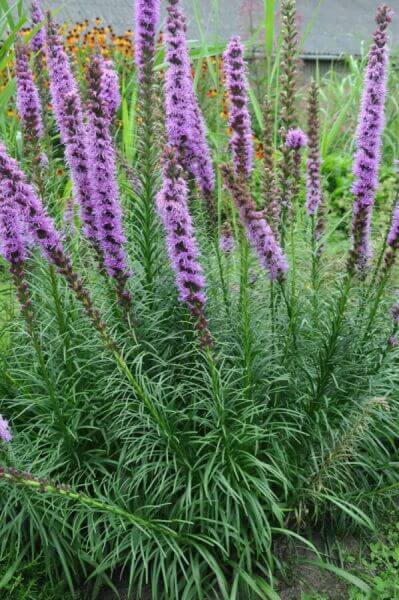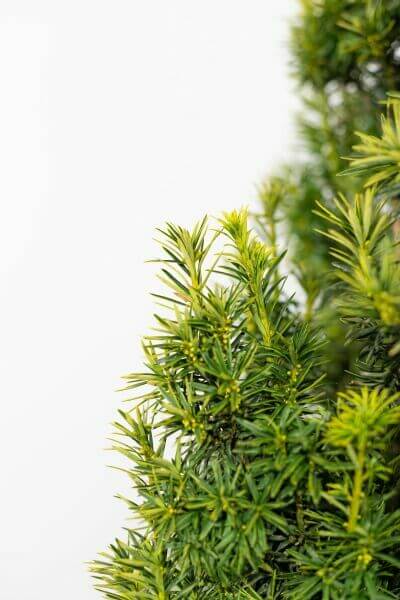Hedge Plants For Wildlife Corridors
Enhance your garden's allure with lavish hedge ranges such as Yew (Taxus), Thuja, Laurel, Photinia, and Bamboo, commemorated for their structural stability and ecological advantages.
Yew and Thuja provide evergreen coverage and winter season durability, while Laurel offers quick development and broad, fragrant leaves.
Photinia includes seasonal appeal with its dynamic red foliage, and Bamboo provides a low-maintenance, peaceful atmosphere.
These hedges improve air quality, decrease noise, and produce tranquil, personal spaces.
Proper planting, spacing, and upkeep make sure vigorous growth and environmental consistency.
Explore how these rich ranges can raise your garden's appeal and well-being.
Key Takeaways
Change Your Garden With Lush Hedge Ranges
- Select Yew for its thick, evergreen development and exceptional durability.
- Go with Laurel for its fast growth and broad leaves, guaranteeing fast personal privacy.
- Pick Photinia for its lively seasonal foliage, which turns a striking dark red.
- Utilize Bamboo for a low-maintenance, winter-hardy hedge with aesthetic appeal.
- Space plants 2-3 per meter and prune regularly for optimal growth and health.
Popular Hedge Plants
When transforming a garden with rich hedge ranges, it's vital to think about popular hedge plants such as Yew, Thuja, Laurel, and Photinia due to their special attributes and advantages.
Yew (Taxus) is extremely respected for its durability and thick, green development, making it a prime choice for enduring landscapes.
Thuja is noted for its evergreen foliage and robust winter strength.
Photinia adds seasonal vibrancy with red leaves that darken over time, creating vibrant visual appeal.
Laurel provides quick development and aromatic, broad leaves, perfect for fast personal privacy.
In Addition, Bamboo is an excellent option for atmosphere, offering a low-maintenance, winter-hardy choice that improves the garden's aesthetic with its stylish, swaying canes.
These selections cater to a range of horticultural requirements and preferences.
Benefits of Garden Hedges
Garden hedges use a plethora of benefits, making them an important addition to any landscape. These natural barriers are cost-efficient to execute and offer significant wind defense, improving air circulation and adding to noise reduction. The dense foliage of hedges like Thuja and Beech ensures personal privacy by blocking visibility, developing a peaceful and secluded environment.
Hedges also play an essential role in microclimate guideline, offering a stable environment that cultivates plant growth and reduces temperature level changes. Their elaborate leaf structures filter pollutants, enhancing air quality and contributing to a much healthier garden ecosystem.
Furthermore, hedges master sound decrease, taking in and deflecting acoustic waves to lower ambient noise levels. This dual functionality of providing both acoustic and visual privacy improves the overall serenity and visual appeal of any garden.
Planting and Maintenance Tips
For an effective hedge, precise preparation of the planting location is essential. Ensure the soil has appropriate pH and drain to support strong root development.
Area the plants properly for the chosen types. Water the hedge often throughout its preliminary growth stage, changing as needed with seasonal changes.
Carry out a systematic insect control and disease avoidance strategy, using natural or chemical treatments when necessary. Routinely examine for aphids, termites, and fungal infections.
Apply mulch to maintain wetness and suppress weeds. Seasonal pruning promotes thick growth and air circulation, vital for plant health.
Following these standards will assist you cultivate a lively, well-maintained hedge that improves the charm of your garden.
Spacing and Trimming Guidelines
Spacing and Trimming Standards
Correct spacing and cutting are vital for cultivating healthy, aesthetically appealing hedges. Adequate spacing ensures each plant receives sufficient nutrients, light, and airflow.
Follow these guidelines for optimal hedge maintenance:
- Spacing: Position hedge plants 2-3 plants per meter to encourage robust growth.
- Pruning Techniques: Regular pruning is important for preserving preferred hedge height and shape. Trim new growth in summer and cut down older wood throughout winter.
- Seasonal Care: Adjust trimming methods and schedules according to seasonal requirements to ensure plant health.
- Hedge Height: Frequently screen and trim to keep the wanted hedge height and achieve uniform visual appeals.
Complying with these actions will guarantee your hedge prospers, boosting both the appeal and functionality of your garden.
Choosing the Right Hedge
Choosing the Right Hedge
Picking the suitable hedge involves examining aspects such as fully grown height, foliage density, and environmental durability. Successful hedge plant choice needs understanding each types' growth qualities and site-specific versatility.
For example, Yew (Taxus) provides outstanding longevity and thick growth, while Thuja is notable for its winter season resilience. In addition, considering maintenance requirements is vital; fast-growing types like Laurel or Privet need regular trimming, whereas low-maintenance choices like Bamboo or Ivy might be preferable for those looking for minimal maintenance.
Ecological aspects such as soil type, light accessibility, and wetness conditions ought to also guide the selection procedure. This cautious approach guarantees the chosen hedges will prosper, offering both functional and visual benefits to the garden landscape.
Delivery and Planting Advice
To guarantee your hedge plants thrive, they must be provided by specialized couriers and planted without delay upon arrival.
Follow these necessary steps for effective planting:
- Soil Preparation: Enhance the soil with natural matter to improve drainage and nutrient material.
- Planting Depth: Develop a trench two times the width and equal to the depth of the root ball.
- Watering Methods: Water completely after planting, keeping the soil regularly damp however not saturated.
- Mulching: Apply a layer of mulch to retain wetness and reduce weeds.
Consumer Assistance and Service
Offered the crucial role of prompt assistance in horticultural pursuits, our consumer support team is available 6 days a week through telephone, e-mail, and social media to provide skilled advice and swiftly deal with any concerns. Their commitment to quick reaction times ensures client satisfaction by fixing questions related to plant health, ideal planting techniques, and maintenance schedules.

----------------------
Telephone
Six days a week
Within 24 hours
This thorough support system, enhanced by a stellar 9.3/ 10 customer rating, highlights our commitment to improving the gardening experience for each customer.
Regularly Asked Concerns
The Length Of Time Does It Consider Hedge Plants to Develop?
Hedge plants usually need one to 3 years to end up being totally developed, with the specific period varying by types and growing conditions.
Reliable care throughout this vital duration is vital for robust growth. Consistent watering, vigilant weed control, and appropriate fertilizer application are pivotal in promoting strong root advancement.
For instance, fast-growing types like Laurel may establish faster, while slower-growing ranges such as Yew may take longer. Diligent maintenance speeds up the establishment process, resulting in thick and healthy hedges.
What Are the Finest Hedge Plants for Privacy?
The question of the very best hedge plants for personal privacy involves evaluating evergreen and deciduous alternatives.
Evergreen hedges like Thuja, Laurel, and Cypress supply year-round coverage, ensuring constant personal privacy.
In contrast, deciduous hedges such as Beech offer seasonal personal privacy, shedding leaves in chillier months.
Key maintenance pointers for privacy hedges include routine trimming, fertilizing in spring, and correct spacing-- usually 2 to 3 plants per meter.
Additionally, constant watering and thorough weed elimination are crucial for promoting healthy, thick growth.
Can Hedge Plants Bring In Wildlife to My Garden?
Yes, hedge plants can draw in wildlife to your garden by providing vital benefits like shelter, food, and nesting websites, consequently enhancing regional biodiversity. For example, yew, holly, and laurel are excellent for bring in birds, while ivy supports a variety of bugs.
Nevertheless, it is very important to keep in mind that there are some drawbacks, such as increased maintenance to handle pests and routine maintenance. Carefully picking and preserving hedge ranges can help balance these advantages and drawbacks, ultimately promoting a vibrant and sustainable environment in your garden.
Are There Any Blooming Hedge Plants Available?
Yes, there are flowering hedge plants readily available that can enhance the charm of your garden.
For instance, Elaeagnus, likewise called Olive Willow, produces fragrant white flowers in the fall, including a touch of sophistication.
Photinia, another popular option, showcases vibrant red leaves that develop into an abundant green, developing a vibrant visual effect throughout the seasons.
To ensure these plants prosper, it's necessary to practice correct pruning techniques and seasonal maintenance, such as trimming new growth in the summertime and cutting down in the winter season.
These procedures will help maintain the health and aesthetic appeal of your flowering hedges.
How Do I Prevent Pests in My Hedge Plants?
To prevent pests in hedge plants, employ natural pest control techniques and keep correct hedge care. Introduce useful pests like ladybugs, which victimize damaging bugs, to develop a well balanced ecosystem.
Regularly inspect your hedges for indications of infestation and quickly eliminate any affected parts to prevent the spread. Ensure the health of your hedges by using well balanced fertilizers and supplying appropriate water.
Use mulching to keep soil moisture and proper spacing to lower plant tension and promote robust development. These practices jointly help in reducing pest concerns and keeping a healthy hedge.
Conclusion
In essence, selecting the right hedge varieties such as Yew, Thuja, and Laurel can change any garden into a relaxing haven. These plants provide year-round plant, improve aesthetic appeal, and deal practical benefits like sound reduction and wind protection.
Correct planting methods, accurate spacing, constant watering, and seasonal trimming are vital for optimum growth.
Trustworthy delivery services and skilled client support guarantee a seamless experience from purchase to planting, making it easier than ever to elevate your outside space.
Garden hedges use a wide variety here of benefits, making them an important addition to any landscape. These natural barriers are cost-effective to carry out and provide substantial wind protection, boosting air circulation and contributing to sound reduction. The dense foliage of hedges like Thuja and Beech makes sure privacy by blocking visibility, producing a serene and secluded environment.

Pruning Techniques: Routine pruning is vital for preserving desired hedge height and shape. Cut new growth in summer season and cut back older wood during winter season.
Comments on “Hedging Plants For Autumn Color”